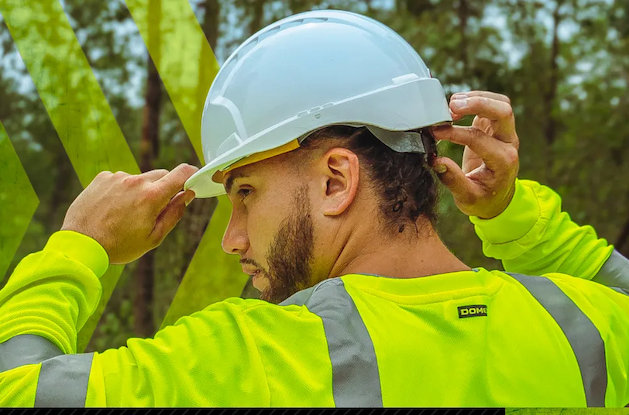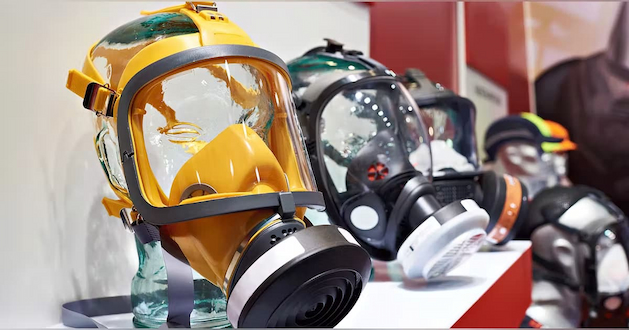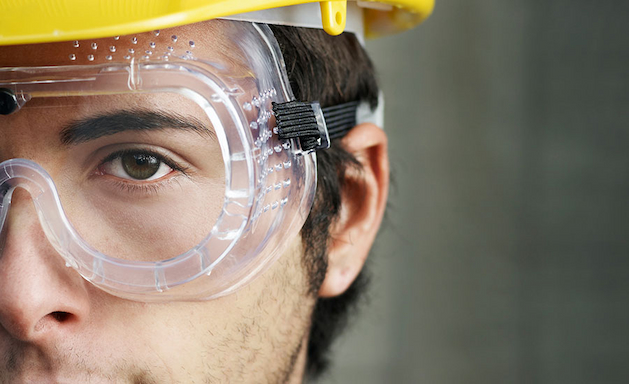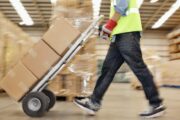According to the Australian Bureau of Statistics, the occupations with the highest rates of work-related injuries in 2021–2022 were community workers – 7.0%, drivers and operators of machinery – 6.5%, labourers – 5.7%, and tradies and technology workers – 5.3%. This goes to show that people with manual jobs working in industrial settings are faced with the biggest risk of injury.
In the industrial sector, providing your team members with the right protective gear is essential for workplace safety, regulatory compliance, and minimising production shortfalls caused by employee illness or work-related injuries. That said, acquiring the proper industrial safety supplies is key to maintaining a safe, comfortable and productive work environment.
Hard Hats

Hard hats are an integral part of PPE and are a global standard for industrial safety. They protect workers from potential head injuries in the workplace. The various hard hat classifications provide varying degrees of protection and are an essential piece of health and safety gear. The 29 CFR 1910.135 standard is for general industry workers and the 29 CFR 1926.100 for construction and demolition workers.
Proper Footwear
The Bureau of Statistics revealed that lower extremity (knee, ankle and foot) injuries are the second most frequent workplace injuries, right after back injuries. Most back injuries can be prevented by using trolleys and similar equipment instead of manually lifting. And when it comes to lower body injuries, it seems that footwear offers the best protection.
Footwear is considered one of the most important industrial safety supplies since the right shoes can shield wearers from electrical shock, falling items, and slip-and-fall accidents. Safety work shoes have steel, composite, and aluminium protective toes. The best type for you typically depends on your line of work.
Construction workers should choose steel and aluminium toes because they offer protection from piercings and sharp things. Contrarily, metal-free composite toes are a little softer and more suited for work involving electrical currents.
Breathing Protection

Many industrial workers are exposed to gases, some of which may be hazardous to their health. Long-term exposure to fumes can cause many health problems, including respiratory illnesses, metal fume fever, stomach ulcers, kidney damage, and even harm to the nervous system.
Using a respirator with a particle filter can help keep the harmful stuff out of workers’ lungs. In some cases, it may also be necessary to look for a gas and vapour cartridge that can stop carbon dioxide absorption.
Ear Plugs
Hats aren’t the only headgear industrial workers should wear. Using earplugs or muffs is essential for some workspaces dealing with a lot of noise, such as construction sites, welding facilities and similar settings. 20% of all industrial workers have hearing problems as a result of around 50% of all manufacturing workers being exposed to dangerous noise.
Industrial safety equipment that provides hearing protection in the form of noise-cancelling ear muffs and ear plugs is crucial for preventing noise-induced hearing damage.
Eye Protection

In Australia, there are over 50 000 eye injuries per year that cost the system around $60 million. Almost seven out of every 1000 employees get an eye injury each year, accounting for 8% of occupational injuries. The simplest way to prevent worker harm and reduced productivity due to eye injury is to provide workers with adequate eye protection, such as safety glasses, goggles, and face shields.
Hand Protection
Cuts, burns, electrical risks, chemical exposure, and other industrial hazards can all be prevented with the use of proper gloves and hand protection. To meet the necessary health and safety compliance criteria, pay attention to factors such as materials, thicknesses, and lengths. While choosing safety gloves, it’s important to recognise what kind of risks workers should be protecting themselves from.
Protective Clothing
Modern technology has made it possible to treat fabrics with a range of finishes and give them features like chemical, heat, and flame resistance. For hazardous applications ranging from chemicals to radiation exposure, fabrics should be able to prevent internal leaking of dangerous compounds that pose both short- and long-term risks to employees.
Hazard Detectors
To fully ensure worker health and safety, extra tools are frequently required in addition to clothing and accessories. Safety devices like different hazard monitors ensure that the industrial work setting doesn’t affect workers’ health in a harmful way. Some of the hazard detectors most frequently used are:
- Air quality monitors – These are available in a variety of designs, including portable, fixed, and handheld models. They measure the amount of particulate matter and volatile organic compounds (VOCs) in the air and provide readings based on those levels because these substances are linked to health problems.
- Gas and chemical detectors – These devices can detect levels of poisonous gases and compounds detrimental to workers and are available in a range of designs and functions, similar to air quality monitors.
- Radiation detectors – These are used to warn users of dangerous radiation levels and can detect alpha, beta, gamma, and X-rays. Readings from these devices reflect exposure to and concentration of various forms of radiation.


